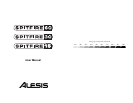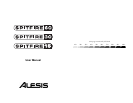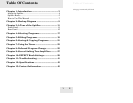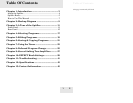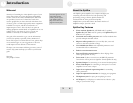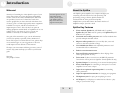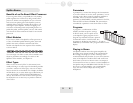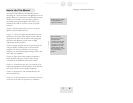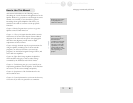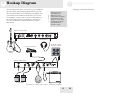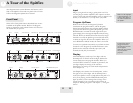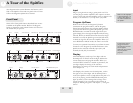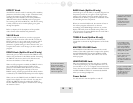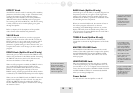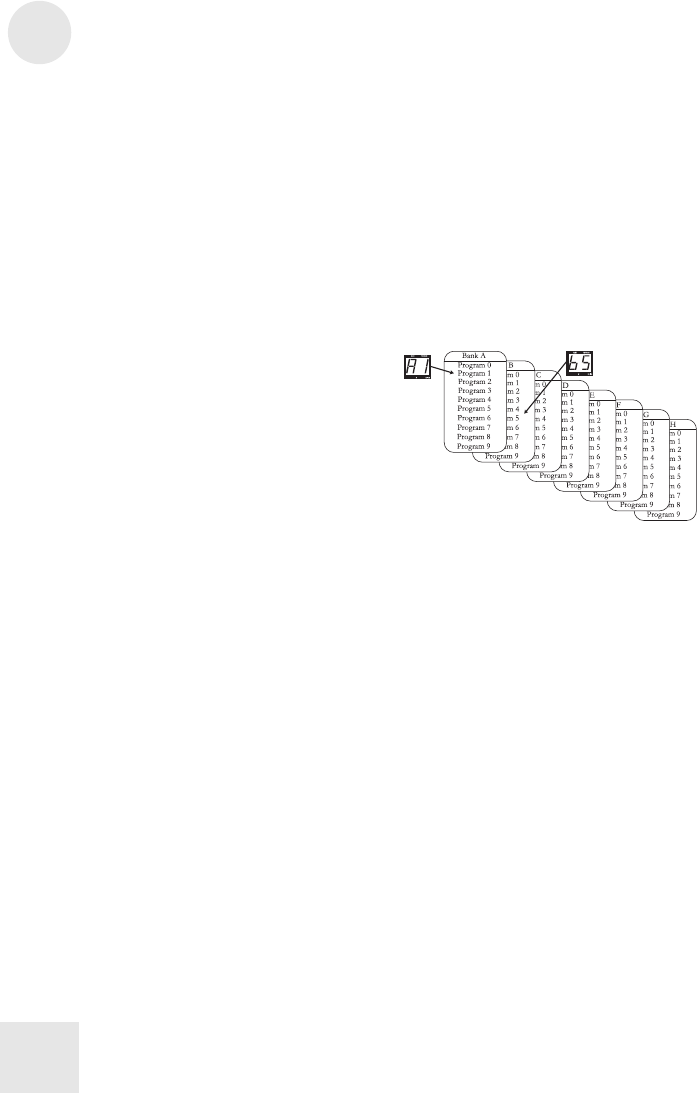
Introduction 1
5
Spitfire Basics
Benefits of an On-Board Effect Processor
If you use guitar effects, you probably do so by linking
pedals together into a chain or by using a multi-effect
processor. All this extra equipment can cost a fortune
and crowd your playing space. The Spitfire, however,
simplifies things because it includes all the effects you
need right in your amplifier. Instead of tripping over
extra wires and turning knobs and pushing buttons on
pedal after pedal, with the Spitfire you have full control
over dozens of effects without the need for an external
processor!
Effect Modules
If you were to think of the Spitfire’s effect processor as
a series of individual pedals linked together, then each
pedal in that series would be considered an effect
module. The Spitfire has nine separate effect modules,
as shown below:
You can assign one effect to each of these modules and
adjust its parameters accordingly. For more on the
Spitfire’s effect modules, see chapter 10.
Effect Types
When we use the word “effect” in this manual, we’re
usually referring to an effect type. Each module provides
you with a selection of effect types, only one of which
may be chosen for each module. For example, the DIST
module allows you to select which type of distortion you
want (ACOUSTIC, TUBE CLEAN, RHYTHM and
others). The behavior of each of these effect types may
be adjusted in one or more ways to produce variations
of the effect.
1 Introduction
6
Parameters
A parameter is a control that changes the characteristics
of an effect. When we use the word “parameter,” we are
referring to the “direct control” parameter available to
the DIST, FX1, FX2 and FX3 modules. DIST’s
parameter is called DRIVE, and the parameters for FX1,
FX2 and FX3 are labeled PARAM. The characteristic
controlled by a parameter varies from effect to effect.
Programs
A program is a combination of effect
modules and their respective settings.
In PLAY mode, you have quick access
to the Spitfire’s eighty programs via the
Program Up and Down buttons, optional
footswitches and the VALUE knob. The
programs are divided up into banks A – H and are
identified by a bank letter and a program number on the
display.
Playing in Stereo
The Spitfire outdoes most other guitar amplifiers by
providing stereo output instead of the standard mono.
We strongly encourage you to take advantage of the
wonderful benefit this provides for your sound, because
many of the Spitfire’s excellent effects will sound even
better when you listen to them in stereo. See chapter 9
for instructions on how to connect a second amplifier to
the Spitfire using the STEREO LINK OUTPUT. If you
don’t have a second amplifier, you can immediately
enjoy the stereo effects simply by listening with
headphones.



